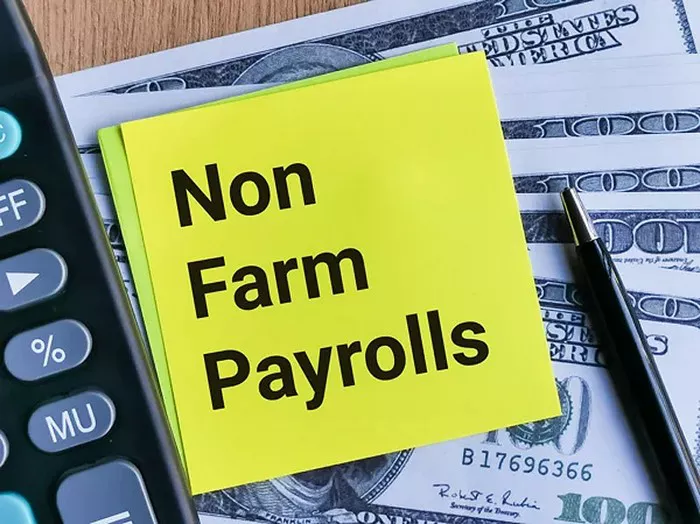Understanding the relationship between nonfarm payroll data and consumer spending habits is crucial in comprehending the dynamics of the economy. Nonfarm payroll data serves as a significant economic indicator, reflecting the overall employment trends, while consumer spending habits provide insights into the state of consumer confidence and purchasing power. Analyzing the interplay between these two factors is essential for businesses, policymakers, and investors aiming to make informed decisions in a rapidly evolving economic landscape.
I. Nonfarm Payroll Data: A Key Indicator of Economic Health
Nonfarm payroll data is a critical measure of employment trends, excluding farm workers, private household employees, and nonprofit organization employees. This data, released monthly by the U.S. Bureau of Labor Statistics, offers valuable insights into the state of the labor market, reflecting job creation or losses across various sectors. Positive trends in nonfarm payroll data typically indicate a growing economy, increased consumer confidence, and a potentially higher consumer spending capacity.
II. Consumer Spending Habits: A Reflection of Economic Confidence
Consumer spending habits play a pivotal role in shaping the economy, as consumer expenditures contribute significantly to the Gross Domestic Product (GDP). Consumer spending reflects the confidence of individuals in the economy, as higher disposable incomes and favorable economic conditions often lead to increased spending on goods and services. Conversely, economic uncertainties or a downturn in employment can lead to reduced consumer spending, impacting various sectors and industries.
III. Correlation between Nonfarm Payroll Data and Consumer Spending Habits
Positive Employment Trends and Increased Consumer Spending
Positive nonfarm payroll data, characterized by job growth and decreased unemployment rates, often correlates with an upsurge in consumer spending. As individuals gain employment and experience improved financial stability, their confidence in the economy increases, leading to higher spending on discretionary items and non-essential goods. This, in turn, stimulates economic growth and contributes to a positive business cycle.
Negative Employment Trends and Reduced Consumer Spending
Conversely, a decline in nonfarm payroll data, marked by job losses and a rise in unemployment rates, can significantly impact consumer spending habits. Individuals facing job insecurity or unemployment often adopt cautious spending patterns, prioritizing essential items and reducing discretionary spending. This shift in consumer behavior can lead to a slowdown in economic growth, affecting businesses that rely on consumer-driven demand.
IV. Influencing Factors on the Relationship
Economic Sentiment and Confidence
The relationship between nonfarm payroll data and consumer spending habits is heavily influenced by economic sentiment and consumer confidence. Positive economic sentiment, supported by robust employment figures, can boost consumer confidence and encourage spending, even in the absence of significant income growth. On the contrary, negative economic sentiment stemming from job losses or economic uncertainties can instill caution in consumer spending patterns, leading to reduced overall expenditure.
Policy Interventions and Stimulus Measures
Government policies and stimulus measures can also influence the relationship between nonfarm payroll data and consumer spending habits. Policies aimed at boosting employment, such as job creation initiatives and incentives for businesses, can positively impact consumer spending by fostering a more favorable economic environment. Similarly, fiscal stimulus measures, such as direct cash transfers or tax incentives, can directly influence consumer spending behavior, particularly during periods of economic downturn or uncertainty.
V. Implications for Businesses and Investors
Understanding the intricate relationship between nonfarm payroll data and consumer spending habits is essential for businesses and investors to make informed decisions. Monitoring nonfarm payroll data can provide insights into potential shifts in consumer spending patterns, enabling businesses to adjust their strategies accordingly. Similarly, analyzing consumer spending habits can offer valuable indicators of future economic trends, guiding investors in identifying potential growth sectors and investment opportunities.
VI. FAQs
Q1: How does nonfarm payroll data impact stock market performance?
Nonfarm payroll data can influence stock market performance by reflecting the overall health of the economy. Positive employment trends often correlate with increased investor confidence, leading to potential stock market rallies. Conversely, negative employment trends can lead to market volatility and a decrease in investor confidence.
Q2: How can businesses leverage consumer spending trends for strategic planning?
Businesses can leverage consumer spending trends by aligning their product offerings with consumer preferences and demands. Analyzing consumer spending habits can help businesses identify potential growth sectors and develop targeted marketing strategies to cater to evolving consumer needs.
Q3: What role does inflation play in the relationship between nonfarm payroll data and consumer spending habits?
Inflation can impact consumer spending habits by influencing the purchasing power of consumers. Higher inflation rates can lead to a decrease in consumer purchasing power, impacting consumer spending habits and overall economic growth. Nonfarm payroll data can serve as an indicator of potential inflationary pressures, guiding policymakers and businesses in implementing appropriate measures to mitigate the impact.
Conclusion
The relationship between nonfarm payroll data and consumer spending habits is complex and multifaceted, reflecting the intricate dynamics of the economy. Analyzing this relationship provides valuable insights into the overall health of the economy, consumer confidence levels, and potential shifts in consumer behavior. Businesses, policymakers, and investors can leverage this understanding to make informed decisions and devise effective strategies to navigate through various economic challenges and opportunities. By recognizing the interplay between nonfarm payroll data and consumer spending habits, stakeholders can foster a resilient and adaptive economic environment that promotes sustainable growth and prosperity.

